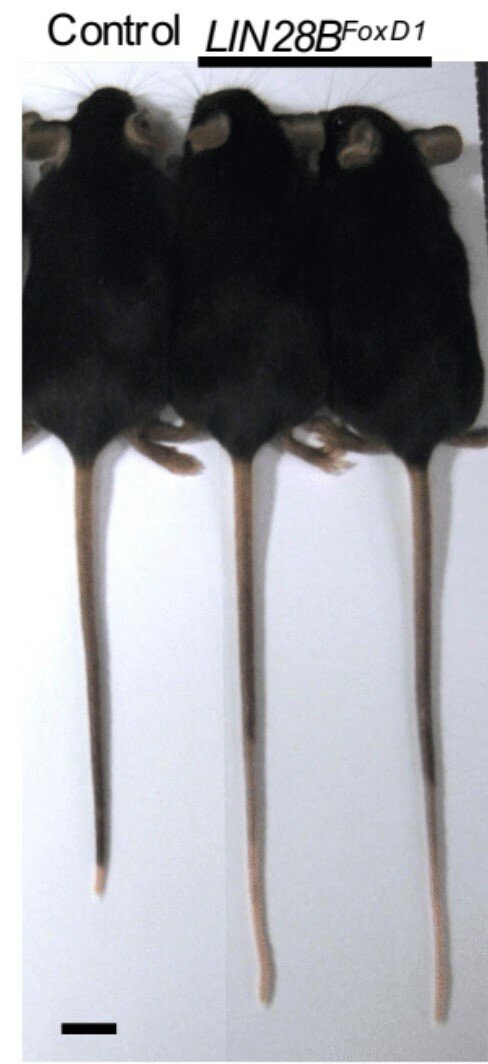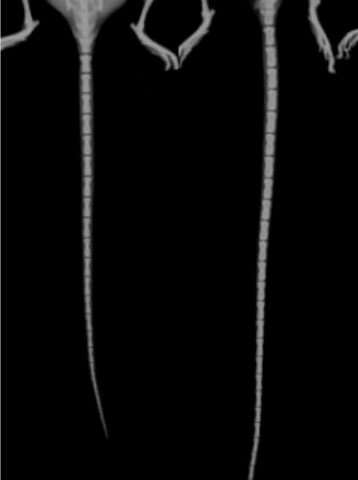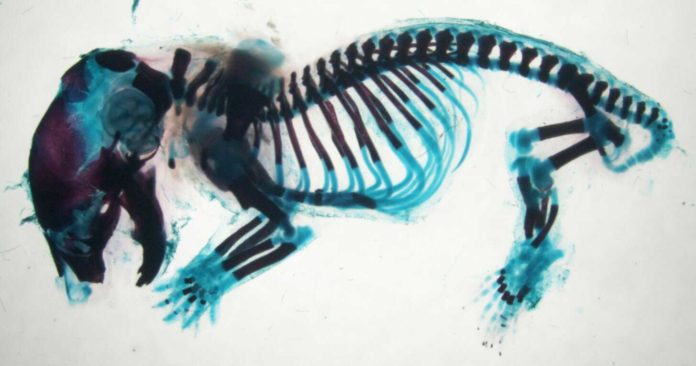While studying mouse development, scientists from two groups accidentally created mice with unusually short and long tails. This discovery could become an awesome example while understanding what happens when developmental pathways go awry.
The discovery is related to a gene called Lin28- already known to have a role in regulating body size and metabolism, among other functions.
Moisés Mallo, a researcher at Instituto Gulbenkian de Ciência in Lisbon, Portugal said, “The same regulatory networks that control mechanisms regulating how a body pattern is formed are often co-opted for other developmental processes. Studying these networks can give us relevant information for understanding other developmental, or even pathological, processes.”

George Daley, an investigator, and dean at Harvard Medical School said, “We were trying to make mouse models of Lin28-driven cancer, but we were surprised to find that these mice had super long tails. They had more vertebrae.
Daley’s colleagues were studying the Lin28/let-7 pathway, which regulates developmental timing and has been implicated in several types of cancer. On the other hand, Mallo was investigating a gene called Gdf11, which was already known to be involved in triggering the development of the tail during embryonic development.
In his lab, they found that mice with Gdf11 mutations had tails that were shorter and thicker than those of regular mice.
Mallo said, “They also contained a fully grown neural tube inside, as opposed to a normal tail that is essentially made of vertebrae. We were able to pinpoint the Lin28 and Hox13 genes as key regulators of tail development downstream from Gdf11.”
Both pathways are associated with the development of somites, which offer ascent to critical structures related to the vertebrate body plan. These blocks of cells eventually separate into the dermis, skeletal muscle, cartilage, tendons, and vertebrae. As well as evolved creatures build up, the somites are set down successively along the body axis. Lin28 assumes a job in managing the planning of this repetitive procedure.

Mallo said, “From my perspective, one of the most important findings of our work is that a group of multipotent cells that build both the somites and the spinal cord are regulated by fundamentally different genetic networks and have different cell competences at two consecutive stages of development. This finding goes beyond the trunk to tail transition, possibly acquiring relevance in pathological processes like the initiation of metastasis.”
Daisy Robinton, a researcher at Harvard and first author of the study from Daley’s lab said, “There are also important implications in this research for understanding evolution. Anterior-posterior axis elongation is an important feature in bilateral animals, and natural selection has created a variety of tail lengths to suit different evolutionary pressures. Until now, little was known about how long is controlled and how the manipulation of genetics can impact morphogenesis.”
Robinton says the next steps for the Daley lab are to address the question of whether Lin28/let-7 acts similarly in other organ systems, as well as to explore more deeply how this pathway influences cell fate decisions during mammalian development.
For Mallo, future work will focus on uncovering further molecular details of how these players modulate the activity of tail bud progenitors and deepening the understanding of how these molecular interactions are mediated.
Reference:
Developmental Cell, Robinton et al: “The Lin28/let-7 pathway regulates the mammalian caudal body axis elongation program.” https://www.cell.com/developmental-cell/fulltext/S1534-5807(18)31084-0 DOI: 10.1016/j.devcel.2018.12.016
Developmental Cell, Aires et al: “Tail bud progenitor activity relies on a network comprising Gdf11, Lin28 and Hox13 genes.” https://www.cell.com/developmental-cell/fulltext/S1534-5807(18)31072-4 DOI: 10.1016/j.devcel.2018.12.004
